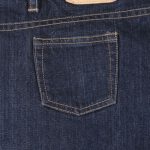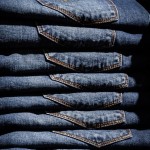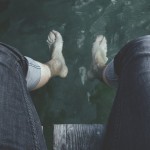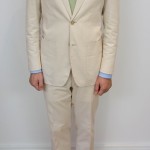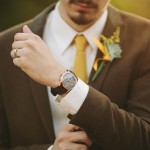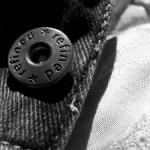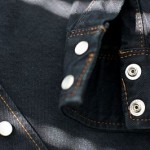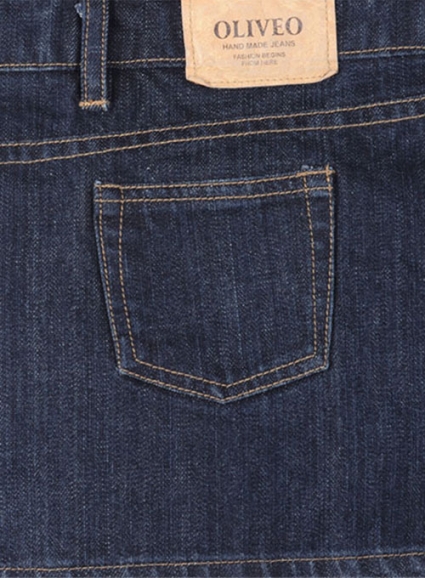
by MakeYourOwnJeans | jeans, Uncategorized |
When putting on a pair of jeans, have you ever noticed the small leather path on the back? Whether it’s a generic or designer brand, most jeans feature a single leather back. As shown in the photo above, it typically features the brand name. Considering that it’s just a label, though, you might be wondering why so many jeans feature this characteristic leather patch. The History of Jacrons There’s actually a name for the leather patch found on the back on jeans. Known as jacrons, they’ve been around for over a century. Research shows that Levi was the first denim brand to begin using jacrons on its jeans. In the late 1800s, the U.S.-based denim brand introduced jacrons in its denim overalls. Shortly thereafter, Levi began using them in its jeans. While Levi continues to use jacrons in its jeans — even after more than a century later — it’s not the only brand that uses them. Jacrons have become synonymous with brand-specific jeans. You’ll find them on nearly all brands of jeans. Even small, lesser-known brands, in fact, use jacrons on their jeans. What Is a Jacron? The term “jacron” refers to a small rectangular- or square-shaped patch found on the backside of a jeans’ waistband. Even if you’re unfamiliar with them, you’ve probably come across jacrons when shopping for jeans. As previously mentioned, nearly all denim brands use them in their jeans. In the past, jacrons were made exclusively of genuine leather. You might be surprised to learn that it was the only part of jeans made of leather. Jeans, of course, are comprised mostly of denim,...
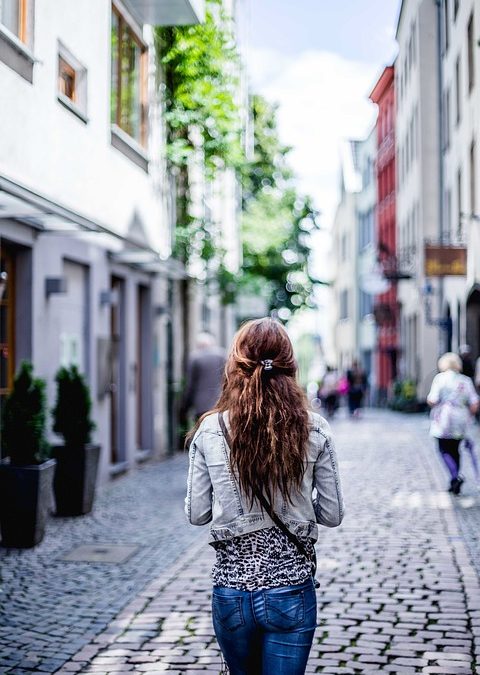
by MakeYourOwnJeans | Uncategorized |
Spring is right around the corner, and with this seasonal transition comes warmer temperatures and longer days. This means you’ll have to put away your winter apparel and accessories and shift your attention to spring items instead. Rather than waiting until the first day of spring to update your wardrobe, it’s recommended that you go ahead and do it now. So, how can you get your wardrobe ready for the spring season? Bring Out The White There’s an unwritten rule that you shouldn’t wear white after Labor Day. For more than a century, countless men and women have followed this rule, omitting white garments and accessories from their outfits after Labor Day. The beginning of spring, however, is the perfect time to bring back the white. From white t-shirts and tank to white jeans and chinos, you can sport this color in style after winter has ended. In fact, white is actually beneficial to wear during the spring and summer seasons because it reflects sunlight. If you’re planning on staying outside on a warm spring day, wearing white garments can keep you cool and comfortable. White has stronger reflective properties than black and other dark colors, so it’s more effective at blocking sunlight. Of course, white is also a “safe” color that looks great with countless other colors and styles, so you can’t go wrong when including white in your springtime outfits. Store Your Winter Apparel Go through your closet — or wherever else you keep your clothes — and pull out all your winter apparel so that you can move it to storage area like your basement or...
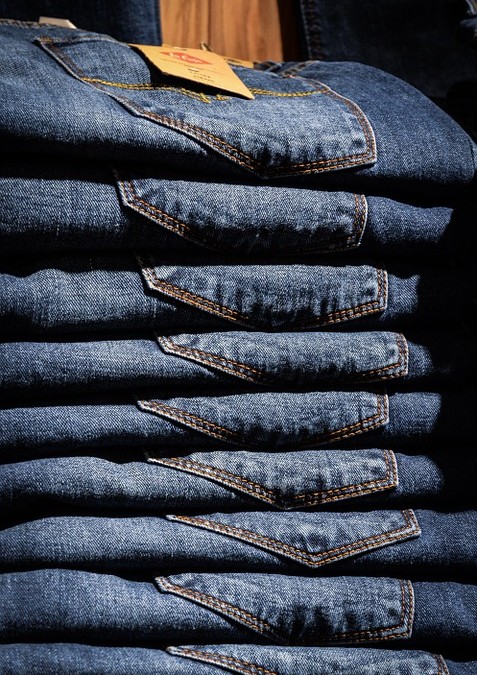
by MakeYourOwnJeans | Uncategorized |
Wouldn’t it be great if you could wear a brand new pair of jeans every day? Well, for most people this isn’t an option — and that’s okay. As long as you take care of you jeans and give them a little TLC once in a while, you can preserve their original look and integrity. Of course, failure to properly care for your jeans will result in them breaking down more quickly. So, what steps can you take to keep your jeans looking new? Don’t Use Bleach I know this probably sounds like common sense, but it’s still worth mentioning that you should avoid washing or otherwise exposing your jeans to bleach. Bleach is simply too powerful, as it will strip away the color of the denim, creating permanent damage. In some case, you may be able to dye your jeans to conceal the bleach stains. Normally, however, even dyes aren’t enough to fix bleach stains. This is why it’s best to err on the side of caution and avoid the use of all bleach and bleach-related products when washing your jeans. If you find a stubborn stain on your jeans that doesn’t seem to go away, try spot-treating it with liquid laundry detergent. Assuming it’s still new and hasn’t “set in,” you should be able to remove it with relative ease. If this doesn’t work, try a gentle fabric stain removing product. Just remember to test the product in a discreet area of your jeans before fully applying it to the stain. This should give you a better idea of whether or not it will work. Wash Inside...
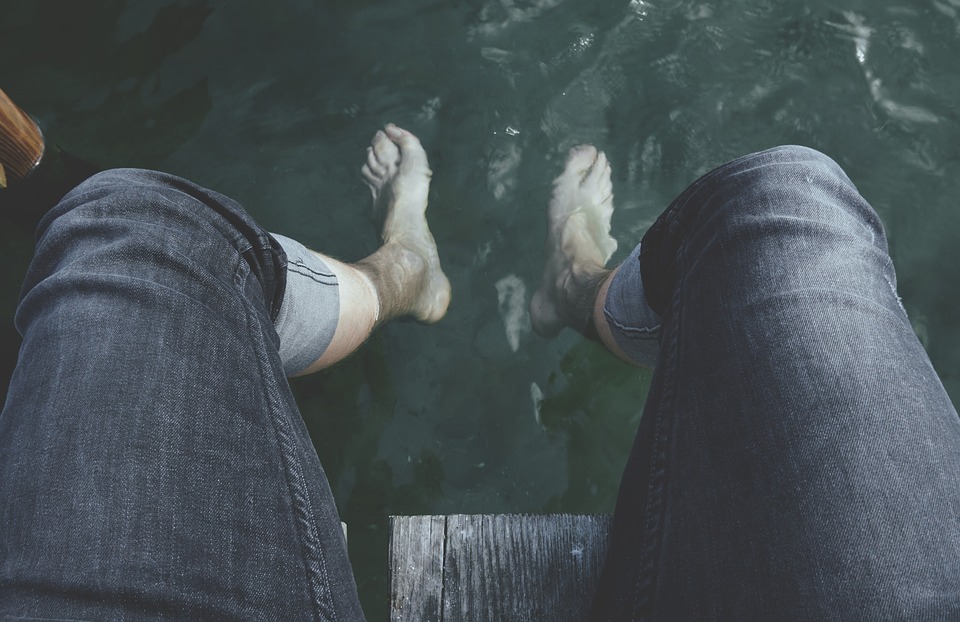
by MakeYourOwnJeans | jeans, Uncategorized |
There’s no denying the fact that jeans are the single most popular style of pants in the world. Studies have shown that the average American owns approximately seven pairs of jeans. Of course, some people own even more, with jeans accounting for the largest segment of their wardrobe. But not all jeans are the same, nor are they are all made equal. Different jeans have subtle nuances in style, shape and overall fashion. This is why it’s important to choose the right jeans that reflect YOUR personality. Dark vs Light If you’ve ever shopped for jeans before (which you probably have), you may have noticed just how many different colors are available. Traditionally, nearly all jeans were made using a standard “blue” color, which remains a popular choice among men and women alike today. However, manufacturers have pushed the boundaries by creating jeans in dozens of other colors, some of which include indigo, light blue, faded blue, black, red, green, and just about every other color under the rainbow. Choosing the right color is important, as it will affect the formality of your jeans. A good rule of thumb is to choose dark-colored jeans for formal occasions and light-colored jeans for casual occasions. Dark colors, such as indigo blue and black, typically offer a higher level of formality than their light-colored counterparts. Boot-Cut Boot-cut jeans — a style in which then legs become wider down towards the ankle — are commonly worn by working individuals. There’s a good reason for this trend: boot-cut jeans are designed specifically to be worn with boots. Granted, there’s no rule stating that you...
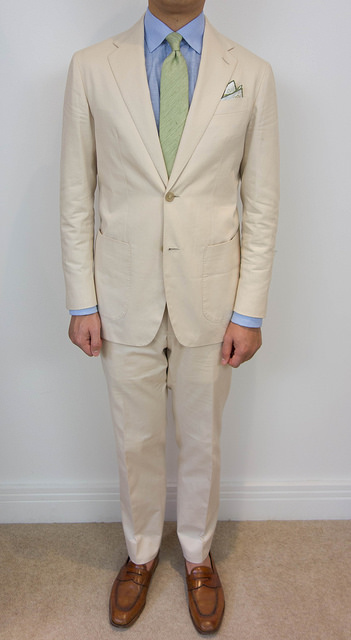
by MakeYourOwnJeans | Uncategorized |
Looking for a slightly more dressier style of khakis? If so, chinos might be the answer. Although they look similar in terms of appearance to traditional khakis, chinos are designed with an emphasis on craftsmanship, offering a cleaner and more formal appearance. However, there are a few things to consider when shopping for a new pair of chinos. Fabric Chinos are typically made of a 100% cotton-twill fabric, which gives them their characteristic soft and lightweight feeling. However, some companies have begun making them in other materials, including polyester and various cotton-synthetic blends. The great thing about polyester and similar synthetic fabrics is the elasticity that it provides. Unlike pure twill, polyester can stretch, adding comfort to chinos. Pleats or No Pleats? Something else to consider when choosing chinos is whether or not you want pleats. Chinos typically come in two different styles: pleated front and flat front. Pleated fronts, as the name suggests, are characterized by a pleat running down the front of each leg. While it’s ultimately a matter of personal preference, most men and women today prefer non-pleated chinos. The biggest complaint with pleated chinos is that they look awkward and unflattering when you sit. But if you plan on standing the entire time, this really isn’t a problem. Again, choose the style that you’re most comfortable wearing. Color What color chinos are you looking for? Chinos are available in a wide variety of colors, ranging from white to khaki, tan and dark brown. When choosing chinos, consider the other clothes that you’ll be wearing. If you plan on wearing a light blue button-up shirt with...
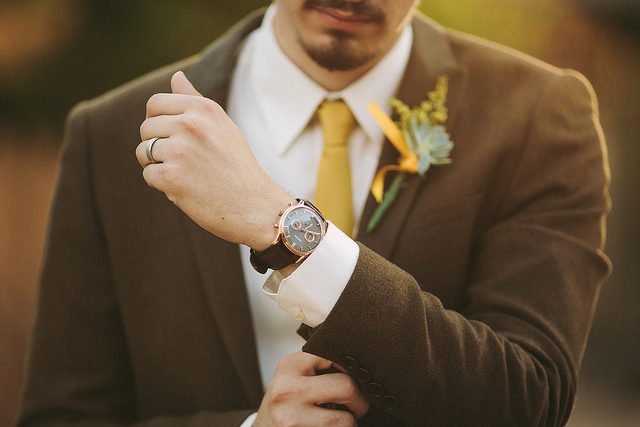
by MakeYourOwnJeans | Uncategorized |
The clothes you wear can and WILL have a direct impact on your confidence. If you toss on sweatpants and a t-shirt everyday, you will feel less confident than if you wore a well-made outfit consisting of high-quality denim jeans, a button-up shirt, and the right footwear. It’s just that simple. It’s unknown how or why exactly fashion affects confidence, but the general consensus among experts is that it does. One plausible theory is that we make first impressions based on appearance; therefore, it only makes sense that your choice of clothes will directly affect your level of confidence. If you’re attending a corporate event or expo in which dozens or even hundreds of other workers are in attendance, you obviously want to present yourself in the most professional manner possible. Doing so will give you greater confidence, at which point you’ll feel more comfortable networking and conversing with other workers in attendance. Another possible reason why fashion affects confidence is because the right clothes allow individuals to blend in and look “normal.” There’s nothing wrong with differentiating yourself from the pack by wearing a unique outfit, but you usually want to keep your style similar to the respective event and/or atmosphere. In other words, don’t wear a pair of shorts and sandals to your best friend’s wedding. Most wedding guests wear a semi-formal attire for this type of event, so it’s a good idea to follow a similar structure with your outfit. A pair of khaki-colored chinos with a button-up shirt and tie is an excellent choice that’s sure to boost your confidence. You might be surprised to...








